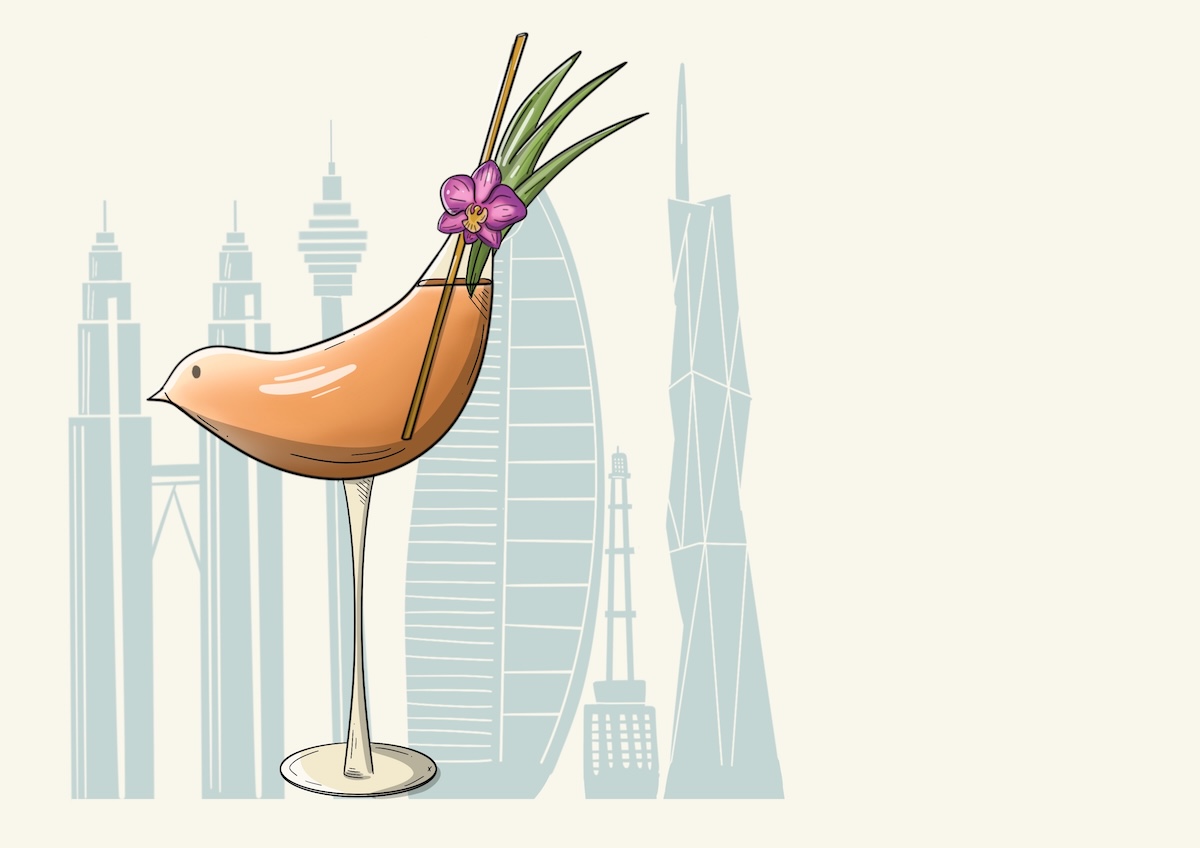The Bird — Kuala Lumpur’s Jungle Bird and the Bar That Hatched It
No story of Asia cocktail culture is complete without a stop in Malaysia, where one of the region’s most influential tiki drinks took flight—literally.
The Jungle Bird was first served in the 1970s in Kuala Lumpur, Malaysia’s buzzing capital city. Originally created as a welcome cocktail at the newly opened Hilton Kuala Lumpur, the drink became an unexpected icon of tropical flavor and balance—though its rise to international fame would take decades.

The Jungle Bird wasn’t just a casual menu addition. According to bar legend, it was one of six cocktails proposed by the Hilton’s opening team in 1973, each designed to represent Malaysia’s exotic landscape and the hotel’s modern luxury. The winning drink—featuring dark Jamaican rum, Campari, pineapple juice, lime juice, and simple syrup—was both tropical and bitter, a rare combination that still sets it apart today.
It was served at the hotel’s Aviary Bar, an open-concept lounge surrounded by live birds in large indoor aviaries. The name Jungle Bird was a tribute to both the drink’s vibrant presentation and the bar’s unique setting. According to early hotel staff, it was even served in a custom ceramic vessel shaped like a bird, with a long tail that doubled as a straw.
For years, the Jungle Bird remained a local favorite. But it wasn’t until Jeff “Beachbum” Berry, a renowned tiki historian, rediscovered the recipe that the drink gained global attention. In his book Beachbum Berry’s Intoxica!, Berry traced the drink to John J. Poister’s 1989 New American Bartender’s Guide, which listed a simplified version of the cocktail. It credited the drink to Jeffrey Ong, the Hilton’s bar manager, who created it as the hotel opened on July 6, 1973.
The research didn’t stop there. Kim Choong, editor of Malaysian drinks journal Thirst, dove even deeper into the story. Through interviews with former Hilton staff, she confirmed Ong’s authorship and uncovered that the Jungle Bird was selected from a list of competing recipes. She also revealed that the hotel changed names several times—becoming the Crowne Plaza Mutiara Kuala Lumpur before being demolished in 2013 as the city pushed forward with modern redevelopment.
Despite its humble beginnings, the Jungle Bird gradually became a global cocktail bar staple, featured on menus from New York to London. Its unique mix of tropical fruit and bitter amaro helped modern bartenders rediscover the beauty of balance, and its Malaysian roots gave it a sense of place rare in tiki culture.
The drink’s symbolism runs deep. It captures a specific moment in Asia cocktail culture—the fusion of international hotel hospitality with local flavor, served in a glass that quite literally flew off the shelves. In fact, the original ceramic Jungle Bird mugs became so popular with hotel guests that many were “souvenired,” forcing the hotel to switch to engraved wine goblets later on.
Today, the Jungle Bird represents more than just a great drink. It stands as a symbol of Malaysian identity in the global cocktail world. As bartender and bar owner Kho Chee Kheong (of Kuala Lumpur’s Coley and Pahit) once said, “It’s a cocktail that represents Malaysia—and it’s how the world learns about our cocktail culture.”
Sadly, Jeffrey Ong passed away in 2019 at the age of 71, having asked for privacy late in life. But his legacy lives on—sipped, shared, and shaken around the world.



